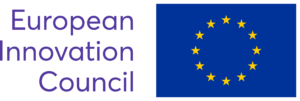WP4: Management of Impact, Communication, Dissemination and Exploitation – (Lead IST)
The objective of WP 4 is to maximize NanoXCAN impact on innovation through the development of a shared approach to knowledge transfer and industrial access. WP4 addresses the necessary support for the continuous planning of the Project’s implementation and its integral management of the Impact, Communication, Dissemination an Exploitation of Results with the following actions: Dissemination and Exploitation of Results Plan (DERP) (deliverables D4.2 to D4.5) that will be monitored by the coordinator management office.
WP5: Project Administration and Management – (Lead IST)
The objective of WP5 is to manage the overall project with respect to administrative, contractual, legal, ethical, financial, and technical issues to ensure highest quality of service and completing deliverables according to the time frame and budget foreseen, in relation with the EU project officer. The Project Coordinator and the Project Management Team, working closely with all partners, will ensure in particular that the planning and effective implementation of the Project are consistent and congruent with the progress made by NanoXCAN project in terms of institutional and management integration and technical ramping-up. WP5 will set up the bodies, management principles and supporting toolsnecessary for the coordination, management, risk control, real-time budget monitoring, recruitment and reporting. WP5 will pursue the following specific objectives are:
- Ensuring proper implementation of the Work Plan and achievement of the project objectives.
- Optimizing allocation of resources.
- Assessing and countering risks.
- Monitoring and ensuring on time delivery of scientific / technical and financial reports.
- Communication with the project officer, including completion of reports and budget monitoring.
- Ensuring proper interaction and internal communications among partners; Organizing project meetings.



